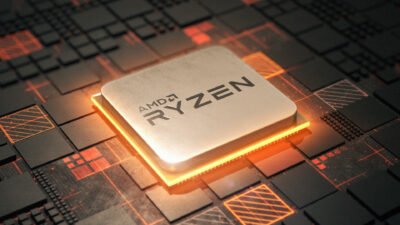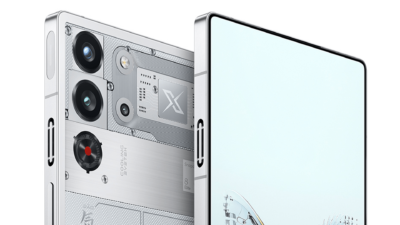ARM plans gaming GPU: challenging Nvidia and Intel?

ARM, known for energy-efficient processor designs, is apparently developing a new GPU architecture for the gaming market. According to reports, a team in Israel is working on the technology that is intended to compete with Nvidia, Intel and AMD.
ARM The British chip developer ARM, known for its energy-efficient processor architectures in smartphones and tablets, appears to be significantly expanding its ambitions in the graphics sector. As the Israeli business newspaper Globes reported, ARM is working on a new GPU architecture that will be in direct competition with the graphics solutions from Nvidia and Intel.
Development in Israel
According to Globes sources, ARM is driving development in its center in Ra’anana north of Tel Aviv. Around 100 chip and software engineers are expected to be involved in the project there. The Israeli development center is already known for its expertise in the field of graphics processing and is responsible for the development of ARM’s current Immortalis GPU, among other things.

Focus on gaming
Interestingly, the new GPU architecture is initially expected to focus on the gaming market. This would be a significant departure from ARM’s previous strategy in the graphics space, which was mainly focused on mobile devices. The question is whether ARM plans to enter the discrete graphics card market or whether the technology is primarily intended for integrated solutions in ARM-based systems.
Although the focus is on gaming, industry experts do not rule out that the technology could also be used for AI processing tasks. This would strengthen ARM’s position in the rapidly growing AI accelerator market, which is currently dominated by Nvidia. Given the current AI boom, this could be a strategically smart move.
Challenges and opportunities
Entering the GPU market for PCs and workstations would pose significant challenges for ARM. Developing powerful drivers for different operating systems and supporting common APIs such as DirectX, Vulkan and OpenGL require significant resources. Intel faced similar hurdles when entering the discrete GPU market with the Arc series.
On the other hand, ARM could benefit from its experience with mobile GPUs. The Immortalis and Mali architectures already offer advanced features such as hardware ray tracing and AI acceleration. Scaling these technologies for more powerful systems could give ARM a competitive advantage.
Possible market strategies
There are several scenarios as to how ARM could use its new GPU technology to gain a foothold in the PC market and compete with Intel:
- Licensing to chip manufacturers
ARM could continue its proven strategy and license the GPU architecture to companies like Qualcomm or MediaTek. - Standalone graphics cards
A direct entry into the discrete GPU market would be risky, but could strengthen ARM’s position in the PC segment. - Integrated solutions
The technology could be incorporated into future ARM-based SoCs for laptops and desktop PCs, similar to Qualcomm’s Snapdragon X chips.
ARM’s entry into the GPU market could have far-reaching consequences. In addition to intensifying competition, it could also lead to new collaborations and takeovers in the industry. In particular, in the area of ARM-based systems for Windows and Linux, a powerful GPU solution could increase the attractiveness of these platforms.
ARM’s previous GPU experience
ARM is no newcomer to the GPU space. The company has been offering graphics units as IP cores under the name Mali for years, which are built into many smartphone SoCs. The newer Immortalis GPU line even offers hardware ray tracing and advanced AI acceleration.
Interestingly, it was recently reported that ARM’s owner SoftBank is working on developing its own AI accelerator. It is conceivable that ARM’s GPU plans are part of this larger initiative and synergies between the projects could be exploited.
Time frame and open questions
So far, ARM has neither confirmed nor denied the reports. A concrete timeline for the market launch of the new GPU architecture is not known. It also remains to be seen how ARM’s traditional customers and partners will position themselves on these plans.
ARM’s foray into the GPU market shows that the company wants to further expand its position in the semiconductor industry. With the increasing focus on energy-efficient high-performance computing solutions, ARM could be well positioned to stand up to the established market leaders.
The coming months and years will show whether ARM will actually be able to revolutionize the GPU market in a similar way to how it once did the smartphone market. What do you think of ARM’s possible entry into the GPU market? Could the company seriously compete with Nvidia and Intel? Share your thoughts and expectations in the comments!












